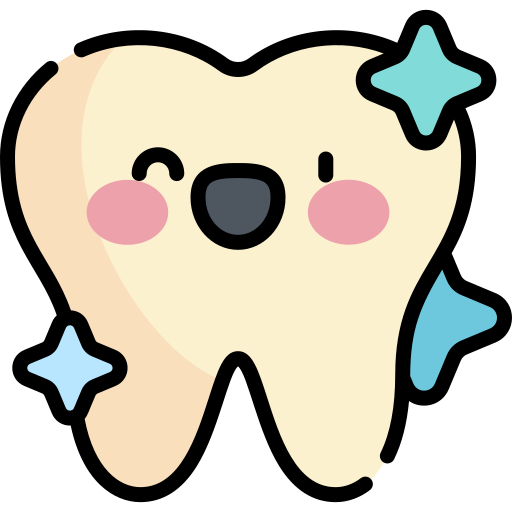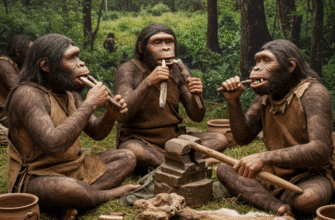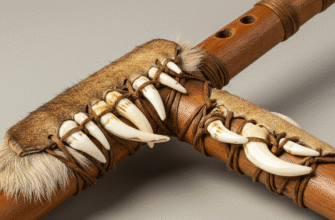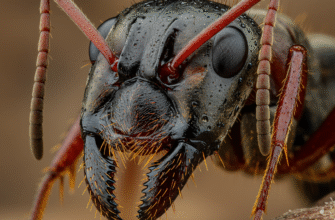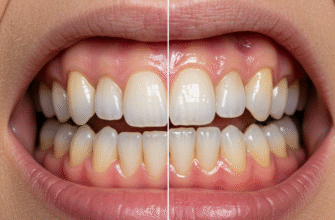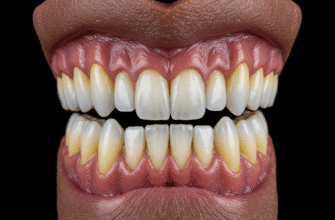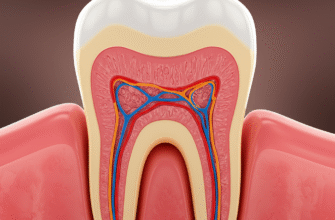The natural world presents a dazzling array of dietary specializations, and herbivorous mammals offer a prime example of how anatomy adapts to sustenance. Two broad categories of herbivores, grazers and browsers, showcase remarkable differences in their dental structures, a direct consequence of the distinct types of vegetation they consume. Understanding these differences unlocks insights into their evolutionary paths, ecological roles, and even the history of past environments.
The World of Grazers and Their Dental Toolkit
Grazing animals are those that primarily feed on grasses and other low-lying vegetation. Think of herds of wildebeest sweeping across the African savanna, cattle contentedly munching in a pasture, or wild horses roaming open plains. Their food source, grass, might seem innocuous, but it presents a significant challenge to an animal’s teeth.
Defining the Grazer Lifestyle
Grasses are notoriously abrasive. They contain phytoliths, which are microscopic particles of silica (essentially glass) absorbed from the soil. This silica content makes grass tough and gritty, acting like sandpaper on the teeth of any animal that consumes it. Furthermore, grazers often ingest a fair amount of soil and grit along with the grass, especially when feeding close to the ground. This constant abrasive action means a grazer’s teeth are under relentless attack throughout their lives.
A Grazer’s Teeth: Built for Grinding
To cope with this harsh diet, grazers have evolved a specialized set of dental characteristics:
Hypsodonty (High-Crowned Teeth): This is perhaps the most defining feature of grazer dentition. Hypsodont teeth are tall, with much of the crown extending far below the gum line. This provides a large reserve of tooth material that can be slowly worn away over the animal’s lifetime. As the exposed surface wears down, more of the tooth erupts from the jaw to replace it. Without this adaptation, a grazer’s teeth would wear down to the gums relatively quickly, leading to starvation.
Incisors for Clipping: The front teeth, or incisors, of grazers are typically broad and flattened. They are arranged in a row at the front of the mouth and are used to efficiently clip grasses close to the ground. In many ruminant grazers, like cattle and sheep, the upper incisors are absent and replaced by a tough dental pad. The lower incisors then press against this pad to tear off vegetation.
Molars and Premolars for Grinding: The cheek teeth (molars and premolars) are the real workhorses. In grazers, these teeth are large, broad, and relatively flat on their occlusal (grinding) surface. This surface is characterized by complex patterns of hard enamel ridges interspersed with softer dentine and cementum. As the tooth wears, the different hardnesses of these tissues cause them to wear at different rates, maintaining a rough, uneven surface that is highly effective for grinding tough, fibrous plant material. The enamel often forms intricate folds and lophs (ridges) that enhance this grinding efficiency. The jaw movement in grazers is predominantly side-to-side, facilitating this grinding action.
Cementum: Grazers’ teeth often have a significant layer of cementum covering the enamel, even on the crown. Cementum is a bone-like tissue that helps to bind the enamel and dentine together, providing additional strength and support to the tooth structure, especially important for the tall crowns of hypsodont teeth and helping to fill in the valleys between enamel ridges.
Examples of grazers include cattle, sheep, goats (though some are mixed feeders), horses, zebras, rhinoceroses (white rhino), kangaroos, and many antelope species like wildebeest and hartebeest.
Venturing into the Browser’s Realm
Browsing animals, in contrast, select their food from higher-growing vegetation. Their diet consists primarily of leaves, soft shoots, twigs, flowers, and fruits from trees and shrubs. This type of forage is generally less abrasive and often more nutritious per bite than grass.
Understanding the Browser’s Menu
The vegetation consumed by browsers is typically softer and less fibrous than grass. It doesn’t contain the same high levels of silica. Because browsers are more selective, picking individual leaves or shoots, they also tend to ingest less incidental soil and grit. This less demanding diet means that their teeth do not face the same extreme wear pressures as those of grazers.
A Browser’s Teeth: Precision Instruments
The dental adaptations of browsers reflect their more delicate and selective feeding habits:
Brachydonty (Low-Crowned Teeth): Browsers typically possess brachydont teeth. These teeth are low-crowned, meaning the crown height is not significantly greater than its width, and most of the crown is visible above the gum line. Since their food is less abrasive, there’s no evolutionary pressure for exceptionally tall teeth with large reserves for wear. The enamel layer is still present but doesn’t need to be as extensively developed for longevity against wear.
Incisors for Plucking and Stripping: Browser incisors are often narrower and sometimes more pointed than those of grazers, suited for selectively nipping off leaves or grasping twigs. Like ruminant grazers, many ruminant browsers (such as deer) also have a dental pad in the upper jaw instead of incisors, using their lower incisors and tongue to pluck and strip foliage.
Molars and Premolars for Crushing and Pulping: The cheek teeth of browsers are quite different from those of grazers. Instead of broad, flat grinding surfaces with complex ridges, browser molars and premolars typically have more distinct, rounded or pointed cusps. These cusps are designed for puncturing, crushing, and pulping softer leaves, twigs, and fruits, rather than the extensive grinding required for grasses. The enamel ridges are present but generally simpler and less numerous than in grazers. The jaw movement in browsers often involves more up-and-down motion combined with some lateral movement, suited for breaking down softer, bulkier items.
Cementum: While cementum is present, particularly on the roots, it is generally less extensively developed on the crowns of browser teeth compared to grazer teeth, as the structural demands are lower.
Examples of browsers include deer (e.g., white-tailed deer, moose), giraffes, black rhinoceroses, and many species of antelope such as kudu and dik-dik.
Verified Information: Dental morphology, specifically tooth crown height (hypsodonty vs. brachydonty) and the complexity of enamel patterns on cheek teeth, are key indicators used by paleontologists to infer the diets of extinct herbivorous mammals. The presence of highly hypsodont teeth in the fossil record often signals the expansion of grasslands in ancient ecosystems. This is because the evolution of such teeth is strongly linked to the abrasive nature of grasses.
Not Always Black and White: Intermediate Feeders
Nature rarely fits into neat boxes, and many herbivores are not strictly grazers or browsers. These are known as intermediate or mixed feeders. They adapt their diet based on seasonal availability or preference, consuming both grasses and browse. Animals like goats, elephants, and some species of deer and antelope fall into this category. Unsurprisingly, their teeth often exhibit characteristics that are intermediate between those of pure grazers and pure browsers. They might have moderately high-crowned teeth (mesodont) or a combination of features that allow them to process a wider variety of plant materials.
The ‘Why’ Behind the Wear: Significance of Dental Differences
The stark differences in the teeth of grazing and browsing animals are a testament to the power of natural selection. Diet is a fundamental driver of evolution, and the mouth, being the primary interface for food acquisition and processing, is subject to intense selective pressures. For grazers, the evolution of hypsodonty was a game-changer, allowing them to exploit the vast, open grasslands that became widespread in various parts of the world during the Cenozoic Era. Without these wear-resistant teeth, a grass-based diet would be unsustainable.
For browsers, the ability to selectively pick nutritious leaves and shoots means their teeth are adapted for precision rather than sheer endurance against abrasion. The different dental structures also influence jaw musculature and skull shape, creating a whole suite of craniodental adaptations tied to diet.
Studying these dental differences is not just an academic exercise. It helps ecologists understand niche partitioning – how different species can coexist by utilizing different food resources. It also provides crucial information for wildlife management and conservation, as changes in habitat and vegetation can disproportionately affect animals with highly specialized diets and dental structures.
A Quick Comparison: Grazer vs. Browser Dentition
Here’s a simplified breakdown of the main distinctions:
- Primary Diet:
- Grazers: Grasses, low-lying vegetation (abrasive).
- Browsers: Leaves, twigs, shoots from trees/shrubs (softer).
- Crown Height (Cheek Teeth):
- Grazers: Hypsodont (high-crowned).
- Browsers: Brachydont (low-crowned).
- Incisors:
- Grazers: Broad, flat for clipping; or lower incisors against a dental pad.
- Browsers: Narrower, for selective plucking/stripping; or lower incisors against a dental pad.
- Molar/Premolar Surface:
- Grazers: Broad, flat with complex enamel ridges for grinding.
- Browsers: More cusped, for crushing and pulping softer material.
- Cementum on Crown:
- Grazers: Often extensively present.
- Browsers: Less developed or absent on the crown.
- Wear Rate:
- Grazers: High due to abrasive diet.
- Browsers: Lower due to softer diet.
In essence, the teeth of an herbivore are a finely tuned instrument, sculpted by evolution to perfectly match the demands of its specific menu. Whether it’s the durable, high-crowned grinders of a plains grazer or the more delicate, cusped teeth of a forest browser, these dental adaptations are critical for survival, allowing each animal to efficiently extract nourishment from its chosen vegetation. The next time you observe a cow chewing its cud or a deer delicately nibbling leaves, take a moment to appreciate the remarkable evolutionary story held within its mouth.
